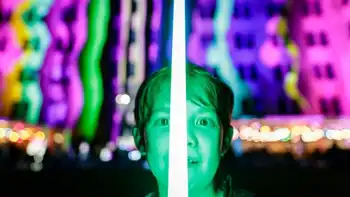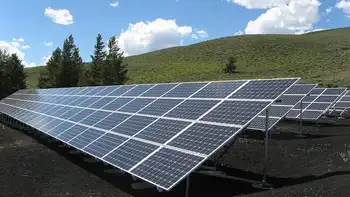EPA, DOE take steps to strengthen ENERGY STAR
WASHINGTON, D.C. - The U.S. Environmental Protection Agency and the U.S. Department of Energy outlined a series of steps to further strengthen the trusted ENERGY STAR program. This action comes at a critical time for American consumers, many of whom struggle to keep up with their monthly energy bills.
In addition to third-party testing already underway, EPA and DOE have launched a new two-step process to expand testing of ENERGY STAR qualified products.
DOE began testing of some of the most commonly used appliances, which account for more than 25% of a householdÂ’s energy bill, and both agencies are now developing a system to test all products that earn the ENERGY STAR label. The steps are part of an overall effort by the Obama Administration to improve the energy efficiency of homes and appliances to save families money.
“Energy efficiency is more important than ever to American families,” Gina McCarthy, EPA Assistant Administrator for Air and Radiation said. “As our economy gets back on its feet, ENERGY STAR is an easy way for consumers to save money and help fight climate change.”
“Consumers have long trusted the ENERGY STAR brand for products that will save them energy and save them money,” said Cathy Zoi, DOE Assistant Secretary for Energy Efficiency and Renewable Energy. “The steps we’re taking now will further strengthen and improve the program, building on the results that consumers have come to expect.”
Consumers can feel confident in ENERGY STAR because in 2009 alone, Americans, with the help of ENERGY STAR saved enough energy to avoid greenhouse gas emissions equivalent to those from 30 million cars — all while saving nearly $17 billion on their utility bills.
The EPA and DOE have launched a two-step process to expand testing of ENERGY STAR qualified products:
• DOE began tests this week on six of the most common product types: freezers, refrigerator-freezers, clothes washers, dishwashers, water heaters and room air conditioners. These product types account for at least 25% of a typical homeowner’s energy bill. DOE will test approximately 200 basic models at third-party, independent test laboratories over the next few months.
• The EPA and DOE are also developing an expanded system that will require all products seeking the ENERGY STAR label to be tested in approved labs and require manufacturers to participate in an ongoing verification testing program that will ensure continued compliance.
EPA and DOE have taken a series of actions in recent months to ensure compliance with both ENERGY STAR and DOEÂ’s appliance efficiency standards, including taking action against 35 manufacturers in the past four months. The ENERGY STAR program helps consumers identify the products that are highly energy efficient and will save them money on utility costs, while DOEÂ’s minimum appliance efficiency standards set baseline energy efficiency levels for appliances.
• 2/5/09 — President Obama ordered the Department of Energy to clear the logjam and issue long-delayed appliance efficiency standards. The Department subsequently met every deadline and issued six standards in 2009 that are expected to save consumers between $250 billion and $300 billion over the next 30 years.
• 7/23/09 — DOE issued a subpoena to AeroSys Inc. to obtain the necessary test data to determine whether certain air conditioners and heat pumps comply with the applicable energy conservation standards.
• 9/24/09 — DOE required AeroSys Inc., a manufacturer of air conditioners and heat pumps, to provide product samples for the Department to conduct its own testing to verify whether certain models meet the federal minimum energy efficiency standards.
• 10/13/09 — DOE announced the formation of an enforcement team within the Office of the General Counsel, which is leading the Department’s efforts to monitor compliance with ENERGY STAR criteria and enforce minimum appliance standards. This includes a program to randomly review manufacturers’ compliance with DOE certification requirements and aggressively pursue any violations.
• 12/7/09 — DOE and EPA announced they were taking steps to remove the ENERGY STAR label from 20 LG refrigerator-freezer models that multiple independent labs confirmed were consuming more energy than allowed under the ENERGY STAR criteria.
• 12/9/09 — DOE announced that it would be aggressively enforcing reporting requirements that manufacturers are required to submit to the Department certifying the energy use of residential appliance models and compliance with energy efficiency standards. DOE offered manufacturers a 30-day window to submit complete and accurate reports to the Department. During that period, DOE received energy use reports from 160 different manufacturers, covering over 600,000 residential products.
• 1/7/10 — DOE announced it had signed a Consent Decree with Haier on four of its freezer models – including two ENERGY STAR models - that were consuming more energy than reported. As part of the agreement with the Department, Haier is required to notify all affected consumers and repair any defective units, and has paid $150,000 to the U.S. Treasury.
• 1/25/10 — DOE disqualified 34 CFL models from 25 manufacturers that did not meet all of the ENERGY STAR criteria for compact fluorescent lightbulbs.
• 1/28/10 — DOE initiated enforcement actions against four showerhead manufacturers who failed to certify 116 product models as meeting the federal water conservation standards.
• 2/4/10 — DOE initiated a civil penalty enforcement action against a manufacturer of air conditioners and heat pumps for failing to certify some of its products and for certifying other products when they had not been tested in accordance with DOE’s test procedure.
• 3/7/10 — DOE initiated enforcement actions against two additional showerhead manufacturers who were suspected of selling products that do not meet the federal water conservation standards.
• 3/11/2010 — EPA notified US Inc/US Refrigeration that their partnership with ENERGY STAR was terminated based on a history of logo misuse, unresponsiveness, and pattern of failure to comply with ENERGY STAR program guidelines.
The ENERGY STAR program already has a comprehensive system in place to ensure consumer confidence that products carrying the ENERGY STAR label actually save energy and save them money. Specifically:
• To receive an ENERGY STAR label, manufacturers must submit data to the federal government showing that their product meets a set of clear, measurable energy efficiency program requirements outlined on www.energystar.gov.
• The Department of Energy and the Environmental Protection Agency conduct “off the shelf” and third party testing of a wide range of products bearing the ENERGY STAR label. For example:
- All ENERGY STAR qualified windows, doors, and skylights must be independently tested by the National Fenestration Rating Council, an independent nonprofit organization with rigorous testing procedures monitored and supported by the Department of Energy.
- The Environmental Protection Agency regularly conducts “off the shelf” testing to verify ENERGY STAR compliance. For example, in 2009 the EPA tested 20 TV models and 16 imaging products and found 100% compliance with the ENERGY STAR label.
- Residential Light Fixtures, Compact Fluorescent Lights and Solid State Lighting systems (also known as LEDs) are all tested by accredited, third-party laboratories.
• Market driven competition also provides a valuable insurance policy on the ENERGY STAR brand. Manufacturers know that the ENERGY STAR label is very attractive to consumers, and often test a competing product to ensure it complies with the requirements. Suspected violations can be reported to the EPA or DOE for followup.
• When a violation is found, the right to use the ENERGY STAR label is revoked, corrective measures are required and the ENERGY STAR partnership may be terminated. For example, in 2008 under DOE pressure, LG Electronics agreed to pay back consumers for promised energy savings and provide free, in-home upgrades to improve several models of refrigerators. These cases also produce substantial unfavorable publicity for manufacturers which can be very costly and create a major disincentive for companies to violate the program requirements.
Violations of the ENERGY STAR label tend to get big media attention, which is good – because it provides a strong disincentive for companies to skirt the system and risk a wave of negative coverage about their product. At the same time, consumers should be aware that in the past few years the number of violations has been quite small, especially given that more than 40,000 individual products carry the ENERGY STAR label.
Last year, the EPA’s independent Inspector General conducted a “spot check” of the program, testing 60 energy star products. Fifty-nine of the 60 products met or exceeded the ENERGY STAR requirements. One product, a specific model of printer, failed on one of three tests (not entering “sleep mode” fast enough).
Related News

Planning for Toronto?s Growing Electricity Needs
TORONTO - As Toronto's population and economy continue to expand, the demand for electricity in the city is also increasing rapidly. In response, the Ontario government, in partnership with the City of Toronto and various stakeholders, has launched an initiative to enhance the electricity infrastructure to meet future needs.
The Ontario Ministry of Energy and the City of Toronto are focusing on a multi-faceted approach that includes upgrades to existing power systems and the integration of renewable energy sources. This initiative is critical as Toronto looks towards a sustainable future, with projections indicating significant growth in both residential and commercial…




